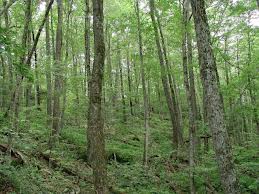
 |
|
Below you will find links to Issue Briefs and Talking Points for several key hardwood issues. The documents may be downloaded or printed. If there's an issue we're working on, but you can't find here, please contact us. If there's a new hardwood issue you think we should be aware of, don't hesitate to let us know that also.
Federal Forest Management
More than 193 million acres of the National Forest System is managed by the U.S. Forest Service (USFS), located within the U.S. Department of Agriculture. Of this total, 46 million acres (24%) are designated as allowable for timber harvest. We acknowledge that are multiple challenges to managing a system as expansive and as diverse as this, including damage caused by pest and invasive species, devastating forest fires, satisfying the concerns of various special interest groups, and budget constraints. However we also believe that the currently designated number of acres allowable for timber harvest is less than it should be and that timber harvesting is not necessarily incompatible with other uses of the forest.
Hardwood Federation members are particularly concerned about the impact the above challenges and limited lands available for harvest have on the availability of timber and fiber from federal forests. Timber sales have declined significantly in recent years, negatively impacting countless wood products businesses, local communities and schools that rely on the jobs and tax base provided by the industry. Federation members are also concerned that the decline in active management of federal lands has also negatively impacted the general health and sustainability of the forests.
Sustainability of American Hardwood
Reducing Carbon in the Atmosphere
The Biden Administration has made clear that climate change is a centerpiece of their agenda throughout their time in office, incorporating climate considerations across government agencies and departments. This is a challenge certainly, but it is also an opportunity for the entire wood products industry, including hardwoods, to present ourselves as part of the solution to climate concerns, with many tools at our disposal including sustainable management and harvest of forest lands, carbon neutral energy fuels, and carbon sequestering products. There are indications that the new Administration is open to some of the solutions we have promoted over the years, including wood product innovation and green building. We will work proactively with the Administration to encourage inclusion of sustainable forest practices and forest product markets as they develop policies and legislation to address carbon in the atmosphere.
Hardwood Federation Carbon Principles
Carbon Benefits of Young vs. Old Forests
Carbon and Climate Comments to Biden Administration
Federal Taxes
With the announcement of multiple major initiatives (The American Rescue Plan, American Family Plan, and American Jobs Plan) from the Biden Administration has also come the major question of "who's going to pay for all of this?" That answer appears, at least in part, to come from tax increases on certain individuals and businesses, but details are relatively scarce.
Media coverage has focused on the jump up in the corporate tax rate to 28 percent from 21 percent as enacted by the Tax Cuts and Jobs Act (TCJA). Also receiving attention are the many provisions to curb off shoring—most notably the doubling of the global minimum tax (known as GILTI or Global Low Tax Intangible Income) from 10.5 to 21 percent. These are two major tax planks in the American Jobs Plan.
The tax items in the American Family Plan that have drawn media coverage are the proposed capital gains increase to 39.6% from 20% for those earning $1 million or more. The other is language ending long-standing capital gains tax break on inheritances known as “step-up in basis,” which allows tax payers to use the market value of assets at the time of inheritance rather than the actual purchase price as the cost basis for capital gains when the holdings are sold.
What has not been widely reported on are the many potential revenue raisers not in either proposal that will almost certainly surface as the Congressional tax writing committees begin their task of fashioning actual legislation to implement these plans. One area on which the Hardwood Federation is keenly focused is a potential increase in taxes S Corporations and other pass through entities currently pay. Beginning in 2018 after enactment of the TCJA, a new tax deduction for owners of pass-through businesses took effect. Pass-through owners who qualify are able to deduct up to 20 percent of their net business income from their income taxes, reducing their effective income tax rate by 20 percent. This deduction is currently slated to run through 2025 unless extended by Congress. Given that pass-through businesses employ a majority of private sector workers (58 percent), pay a significant share of all business taxes (51 percent) and that large S-Corporations (over 100 employees) pay 20 percent of all business taxes, it seems reasonable to conclude that Congress will turn to pass throughs at some point as they sharpen the pencil on raising revenue.
Another proposal that has received serious consideration in previous Congresses is eliminating the preferential tax treatment on standing timber. Currently, standing timber is assessed at the capital gains rate, recognizing the long term investment and risk that landowners incur to produce trees that can take 50 to 80 years to mature. So called “pay fors” have surfaced in Congress in recent years that would eliminate capital gains preferential tax treatment for revenue derived from harvesting timber and instead assess gains as ordinary income at the top tax rate. More than doubling the tax rate on timber proceeds would be devastating for forest landowners across the spectrum--from small private landowners trying to put a kid through college with a timber sale or thinning project to large industrial forest landowners. The downstream effects on companies in the hardwood manufacturing sector that rely on forest fiber for product and energy are consequential.Biomass and Carbon Neutrality
The US Environmental Protection Agency is developing rules to govern the emission of biomass. How they approach this issue could have serious consequences for the forest products industry. The Hardwood Federation is tracking the development of the guidelines and providing input and comments.Biomass 101
HF Biomass One Pager
What is Biomass??
Click on the video above to learn all about the benefits of biomass!
Transportation and Infrastructure
The efficient and timely transport of finished products to their customers has plagued the hardwood industry and the broader U.S. economy. Challenges ranging from driver shortages to shipping backlogs in our nation's major ports have created historic bottlenecks that have hindered the transportation of goods, created business uncertainty and helped drive inflation not experienced since the early 1980s. Fortunately for the industry, Congress and the Administration have been working together in a rare, bipartisan manner to implement federal policies that provide some relief from the ongoing challenges.
Transportation One-Pager - TBD
International Trade
The Hardwood Federation advocates for a balanced national trade policy that is flexible enough to address the wide variety of needs not only within the U.S. Hardwood industry, but also U.S. industry as a whole. We encourage policymakers to view trade not as a “one size fits all” issue, but rather to work together within the context of new and existing trade agreements to employ policies that support the various sectors and their needs.
The Farm Bill
The Farm Bill is a piece of comprehensive legislation that covers most federal government policies related to agriculture in the United States. The Farm Bill is intended to be passed every 5 years by the United States Congress and deals with a number of food and farming issues administered by the United States Department of Agriculture (USDA). The Farm Bill will be a key HF priority in 2022 and the coming years as it is finalized in 2023. Key issues included in the Farm Bill that impact the Hardwood Industry include financial support for export promotion programs, federal forest management reform, energy and tall wood buildings. Key areas for the hardwood industry will include:
- Export Promotion
- Timber Innovation Act (TIA)
- Community Wood Energy and Wood Innovation Program (CWEIP)
- Federal Forestry Management Reform
Tall Wood Buildings
The Hardwood Federation supports efforts to develop and use wood products, including mass timber, in the construction of so-called tall wood buildings. Tall wood buildings are defined as those that are designed to be over 85 feet high.
Timber Innovation Act One Pager
The Lacey Act
The Lacey Act as amended in 2008 makes it against the law for illegally harvested timber and products made from this timber from being imported into the United States. Illegally harvest timber competes unfairly with U.S. timber and goods and is detrimental to good environmental stewardship efforts.
Lacey Act Issue Brief
Union of Concerned Scientists Lacey Act Impacts Study







